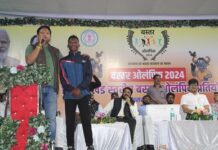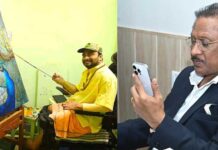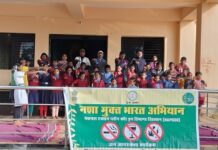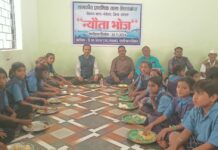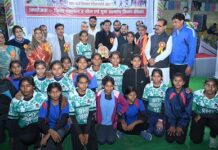The signs were ominous. Crowds swelled by the hundreds to an estimated 2 lakh in three days. And tension was palpable. But the violence that unfolded finally on Friday — the day Dera Sacha Sauda chief Gurmeet Ram Singh was convicted of rape by a CBI court in Panchkula — was unprecedented in the four-decade history of this sleepy town, which is mostly known as a satellite of Chandigarh.
Security forces had locked the town down, right from Zirakpur on the one side, Chandigarh on the other, Kalka on the third, and hillocks on the fourth. The day began with hushed silence as the dera followers sat quietly in the open at several locations. Many had been huddled into grounds across the highway that separates the main town from its rural and suburban parts.
It seemed fined when the police managed to bring the dera head to the jail efficiently and secretively by changing vehicles.
Soon after the hearing began at 2.30pm, a rumour emerged — that the dera chief was acquitted. Celebrating premis rushed towards the court complex in Sector 1. It was just past 2.45 when an alert was sounded across the district and scores of paramilitary forces took positions.
Just before 3pm, the verdict was announced — guilty! Mayhem ensued.
The first major clash broke out on the Panchkula-Kalka highway along Sector 3 where a large number of dera followers had congregated and began marching towards the courts complex, barely 2 km away. First in the line of their arson were media vans, which were vandalised, upturned, then burnt.
Violence also erupted from the Hafed Chowk near Sector 2. This was where live streaming for media with their OB vans was being done. In the free-for-all, journalists ran for cover. The premis moved towards government buildings, destroying parts of the Hafed building and income tax headquarters. A petrol pump in nearby Sector 4 too was damaged. Smoke from the burning fuel station filled the air, as did tear gas.
Then, gunfire raged as security agencies clashed with the mob that was using petrol bottles and sticks. Sources said that most of the casualties of the dera followers — 28 in the town — were at these locations.
Before the gunfire, police appeared helpless and some even ran away. “We don’t have orders to open fire,” some of them said, running. Then the paramilitary forces controlled the mob and forced them to leave these spot, pushing them onto the highway into Zirakpur, from where they were eventually taken away in buses. Elsewhere, deputy commissioner Gauri Prashar Joshi was sheltered inside a government building in Sector 4, teargas burning her eyes.
As this went on for an hour, violence had also erupted in Sector 5’s Yavanika Garden where dera followers were camping. Electricity polls were brought down, windowpanes of Rajhans Mall shattered with stones.
By the time it was over, at least 50 vehicles were left fully damaged while the exact loss to public and private properties was not known.
All this while, residents stayed indoors, hoping that the mob does not turn onto homes — a fear that was shared by many across the town and beyond.
At 5 pm, police commissioner AS Chawla briefed the media at General Hospital, Sector 6, saying that the town was safe again as all dera followers were flushed out, barring some women who would be sent out soon.
When Chawla was asked how police let the followers assemble despite knowing the danger lurking, he got agitated and left the spot.
In the evening, curfew was clamped and army had taken over, with barbed wire everywhere to regulate or block entry. It was lifted by the night. Yet, top officials were not available to say anything.
The fires were put out, but an angry quiet was still burning across town.



